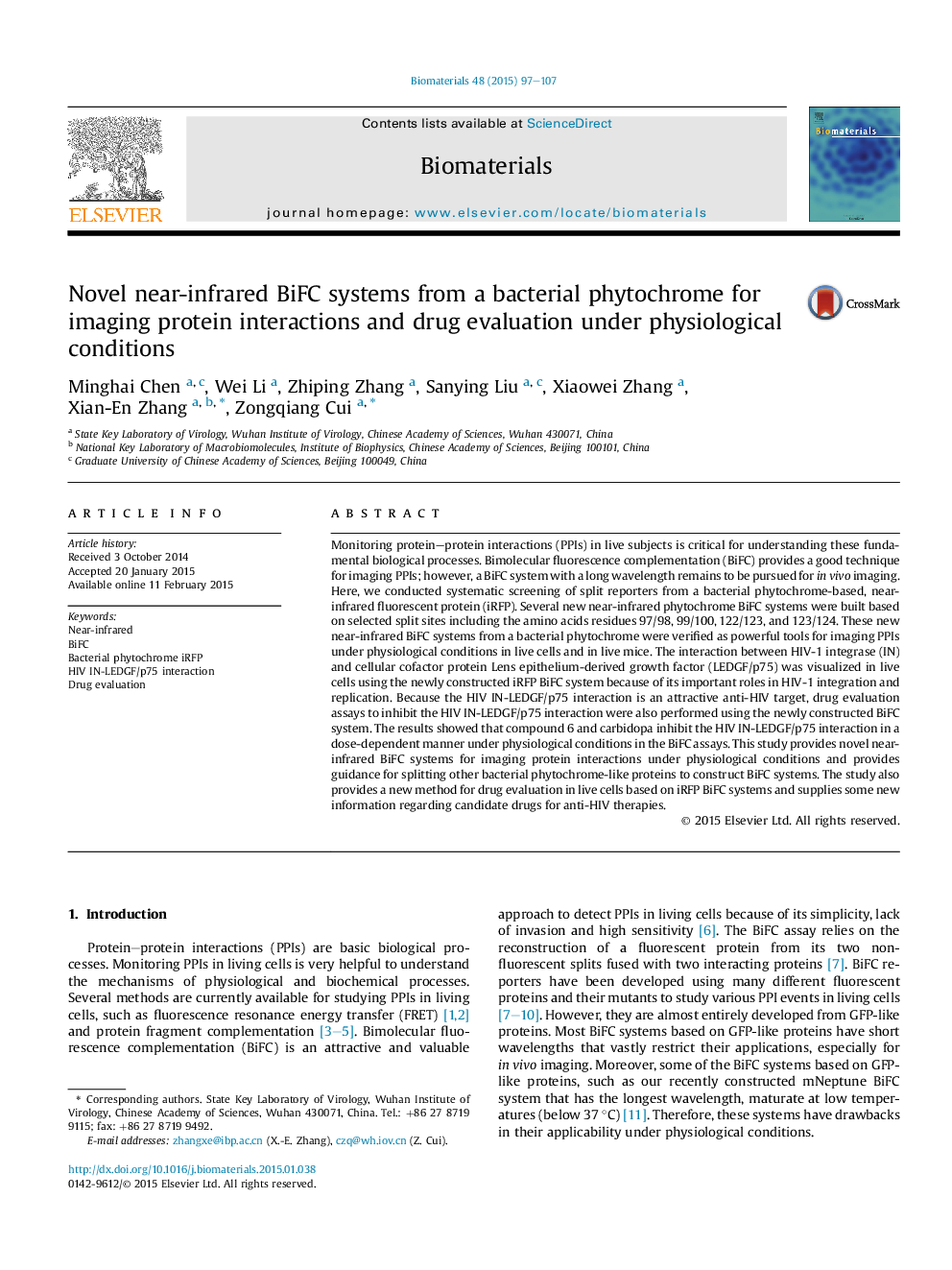| Article ID | Journal | Published Year | Pages | File Type |
|---|---|---|---|---|
| 5719 | Biomaterials | 2015 | 11 Pages |
Monitoring protein–protein interactions (PPIs) in live subjects is critical for understanding these fundamental biological processes. Bimolecular fluorescence complementation (BiFC) provides a good technique for imaging PPIs; however, a BiFC system with a long wavelength remains to be pursued for in vivo imaging. Here, we conducted systematic screening of split reporters from a bacterial phytochrome-based, near-infrared fluorescent protein (iRFP). Several new near-infrared phytochrome BiFC systems were built based on selected split sites including the amino acids residues 97/98, 99/100, 122/123, and 123/124. These new near-infrared BiFC systems from a bacterial phytochrome were verified as powerful tools for imaging PPIs under physiological conditions in live cells and in live mice. The interaction between HIV-1 integrase (IN) and cellular cofactor protein Lens epithelium-derived growth factor (LEDGF/p75) was visualized in live cells using the newly constructed iRFP BiFC system because of its important roles in HIV-1 integration and replication. Because the HIV IN-LEDGF/p75 interaction is an attractive anti-HIV target, drug evaluation assays to inhibit the HIV IN-LEDGF/p75 interaction were also performed using the newly constructed BiFC system. The results showed that compound 6 and carbidopa inhibit the HIV IN-LEDGF/p75 interaction in a dose-dependent manner under physiological conditions in the BiFC assays. This study provides novel near-infrared BiFC systems for imaging protein interactions under physiological conditions and provides guidance for splitting other bacterial phytochrome-like proteins to construct BiFC systems. The study also provides a new method for drug evaluation in live cells based on iRFP BiFC systems and supplies some new information regarding candidate drugs for anti-HIV therapies.
